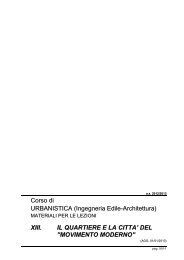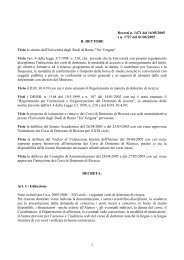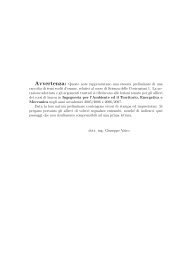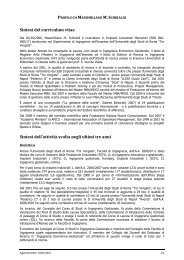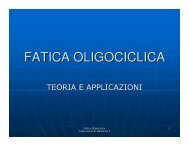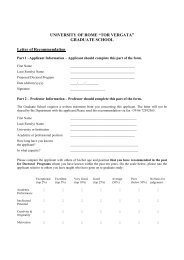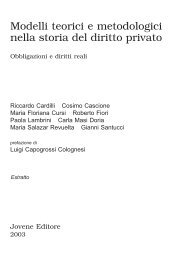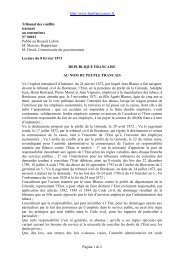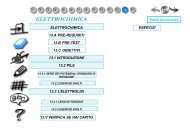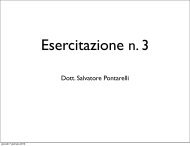Puneet Khandelwal, Soman N. Abraham and Gerard Apodaca
Puneet Khandelwal, Soman N. Abraham and Gerard Apodaca
Puneet Khandelwal, Soman N. Abraham and Gerard Apodaca
Create successful ePaper yourself
Turn your PDF publications into a flip-book with our unique Google optimized e-Paper software.
lium is mounted in Ussing chambers <strong>and</strong> bowed outward by an<br />
increase in the fluid level in the mucosal hemichamber (which<br />
mimics bladder filling), amiloride-sensitive current significantly<br />
increases (132, 223), likely the result of increased apical<br />
membrane exocytosis of ENaC-containing DFV. Beyond its<br />
well-described function in mediating Na � transport, ENaC is<br />
also proposed to play a role in modulating ATP release from<br />
the uroepithelium (61, 62), <strong>and</strong> recent studies indicate that<br />
ENaC may have a mechanosensory role in modulating stretchinduced<br />
exocytosis at the apical membrane of the umbrella cell<br />
(234). These studies are described below.<br />
In addition to increasing Na � transport, stretch also stimulates<br />
electroneutral Cl � <strong>and</strong> K � transport (223). The channel(s)<br />
responsible for Cl � transport is unknown; the pathway for K �<br />
transport includes an apically expressed nonselective cation<br />
channel (NSCC) that conducts Cs � (a hallmark of NSCCs) <strong>and</strong><br />
is sensitive to tetraethylammonium, Gd 3� , La 3� , <strong>and</strong> high<br />
concentrations of amiloride (100 �M) (223, 234). An important<br />
mechanosensory role for this channel was recently proposed<br />
(234). In response to stretch, this channel may conduct<br />
Ca 2� across the apical membrane of the umbrella cell, which<br />
stimulates Ca 2� -dependent Ca 2� release <strong>and</strong> apical membrane<br />
exocytosis. The identity of the NSCC is unknown but may be<br />
one of several transient receptor potential (TRP) family members<br />
that are expressed in the uroepithelium, including polycystin-1<br />
<strong>and</strong> -2 (96; unpublished observations).<br />
Renal outer medullary K � channel [inwardly rectifying K �<br />
(Kir1.1) channel] expression was recently described in the<br />
uroepithelium (190). In the kidney, this channel is important<br />
for K � secretion in the collecting duct <strong>and</strong> salt transport <strong>and</strong><br />
K � <strong>and</strong> Na � resorption in the thick ascending limb. It is<br />
expressed at the apical membrane of the umbrella cells <strong>and</strong>, to<br />
a lesser extent, in the cell cytoplasm. Its expression levels are<br />
unaffected when animals are fed a diet depleted of K � , <strong>and</strong> its<br />
function in the uroepithelium is unknown. However, it may act<br />
to regulate cell volume or transmembrane electrical potential,<br />
which may be important for uroepithelial sensory transduction,<br />
<strong>and</strong> it may also act to modify the K � content of the urine.<br />
Additional K � channels have been identified in the uroepithelium.<br />
These include the heparin-binding EGF (HB-EGF)modulated<br />
inwardly rectifying channel Kir2.1 <strong>and</strong> the largeconductance<br />
(maxi-K) channel (198). Wang et al. (223)<br />
showed that pressure-stimulated K � secretion was augmented<br />
by treatment of the serosal surface with charybdotoxin (an<br />
inhibitor of Ca 2� -activated K � channels), but not the maxi-K<br />
channel-specific inhibitor iberiotoxin. Apamin [an inhibitor of<br />
the small-conductance K � (SK) channel] <strong>and</strong> glibenclamide<br />
[which inhibits ATP-sensitive K � (KATP) channels] also altered<br />
K � secretion. Most recently, Yu et al. (234) used RT-<br />
PCR to identify stretch-modulated K � channels that are expressed<br />
in the uroepithelium. Message for the following channels<br />
was observed: the Ca 2� -activated K � channels KCNMA1<br />
[large-conductance K � (BK) channel] <strong>and</strong> KCNN1–4 [smallor<br />
intermediate-conductance K � (SK/IK) channel], the twopore<br />
K � channels KCNK2 (TREK-1) <strong>and</strong> KCNK4 (TRAAK),<br />
<strong>and</strong> the inwardly rectifying ATP-modulated K � channels<br />
KCNJ8 (Kir6.1) <strong>and</strong> KCNJ11 (Kir6.2) (234). Immunofluorescence<br />
was used to confirm that Kir6.1 was expressed at the<br />
basolateral surface of the umbrella cells <strong>and</strong> plasma membrane<br />
of the underlying cell layers. Most intriguingly, treatment with<br />
the channel openers NS309 (which targets SK/IK) <strong>and</strong> chro-<br />
THE UROEPITHELIUM<br />
makalim (which targets KATP) causes a net increase in apical<br />
membrane exocytosis (234), possibly by decreasing compensatory<br />
endocytosis at this membrane.<br />
Other ion channels with a potential sensory role have been<br />
described in the uroepithelium (14). These include TRPV1 <strong>and</strong><br />
TRPV4, both of which are important in modulating bladder<br />
function (25, 69, 122, 193), TRPV2 (33), <strong>and</strong> TRPM8 (54, 122,<br />
193). The latter may be important in a neonatal response to<br />
instillation of cold fluids into the bladder (193). Additional<br />
channels include the P2X family of ATP receptors, which act<br />
as nonselective cation channels. All seven P2X receptors<br />
(P2X1, P2X2, P2X3, P2X4, P2X5, P2X6, <strong>and</strong> P2X7) have been<br />
identified in the uroepithelium (27, 58, 129, 197, 200, 218,<br />
225). KO mice lacking expression of P2X2 or P2X3 subunits<br />
show altered bladder function <strong>and</strong> decreased stretch-induced<br />
apical exocytosis when their bladders are filled (42, 43, 219,<br />
225). Other studies have shown nicotinic receptor expression<br />
in the uroepithelium (19) <strong>and</strong>, possibly, acid-sensing ion channels<br />
(122). The potential functions of these channels in sensory<br />
transduction are described below.<br />
FUNCTION OF UPs<br />
AJP-Renal Physiol • VOL 297 • DECEMBER 2009 • www.ajprenal.org<br />
Review<br />
F1485<br />
The UPs are a family of five proteins that assemble into<br />
AUM particles <strong>and</strong> are the major constituents of the apical<br />
membrane plaques of the umbrella cell. They have a variety of<br />
functions, including formation of the barrier to solute <strong>and</strong><br />
water flow across the apical membrane (91, 92), modulation of<br />
the bladder function (1), promotion of sperm/egg fusion in<br />
lower vertebrates (81, 82, 177), <strong>and</strong>, possibly, regulation of<br />
urogenital development (99). Furthermore, they are co-opted<br />
by uropathogenic bacteria, which use UPIa as a receptor for<br />
bacterial adherence (238). The UPs include UPIa <strong>and</strong> UPIb,<br />
which share 40% homology, have four transmembrane domains<br />
<strong>and</strong> two extracellular loops, <strong>and</strong> are members of the<br />
tetraspanin family of proteins (Fig. 3B) (228). The other UPs<br />
are single-span membrane proteins <strong>and</strong> include UPII, UPIIIa,<br />
<strong>and</strong> UPIIIb (52, 228). The latter is a minor constituent of<br />
plaques. In mammalian tissues, UPIa, UPII, UPIIIa, <strong>and</strong><br />
UPIIIb are only expressed in the uroepithelium <strong>and</strong> are concentrated<br />
in the umbrella cell layer; however, as noted above,<br />
some UP expression is also seen in the upper intermediate cell<br />
layers. In addition to the uroepithelium, UPIb is expressed in<br />
the cornea <strong>and</strong> conjunctiva <strong>and</strong>, possibly, the lung (3). UPs are<br />
likely to have formed by gene duplication <strong>and</strong> are absent in<br />
some vertebrates but are found in others, including Xenopus<br />
laevis (frog), Gallus gallus (chicken), <strong>and</strong> Danio rerio (zebrafish)<br />
(68). Additional information about UPs <strong>and</strong> their<br />
function can be found in an excellent review by Wu et al.<br />
(230).<br />
Assembly of UPs into AUM particles. The following scenario<br />
of AUM assembly is proposed (230). The initial site of<br />
AUM formation is in the endoplasmic reticulum (ER), where<br />
UPIa forms heterodimers with pro-UPII, <strong>and</strong> UPIb pairs with<br />
UPIIIa or UPIIIb (Fig. 3B) (52, 229). UPIb can exit the ER<br />
when expressed alone, whereas the other UPs can only exit as<br />
heterodimers (207). Exit of UPIb from the ER likely depends<br />
on specific residues within its transmembrane domains, inasmuch<br />
as swapping these domains with those in UPIa results in<br />
defective exit from the ER (206). In the Golgi apparatus,<br />
N-linked glycans on pro-UPII are converted from the high-<br />
Downloaded from<br />
ajprenal.physiology.org<br />
on October 6, 2010



